Physics Aims and objectives IB Curriculum model

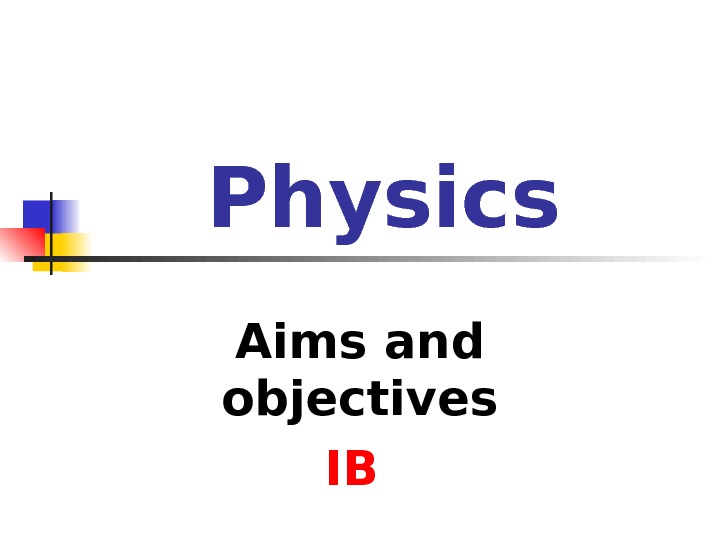
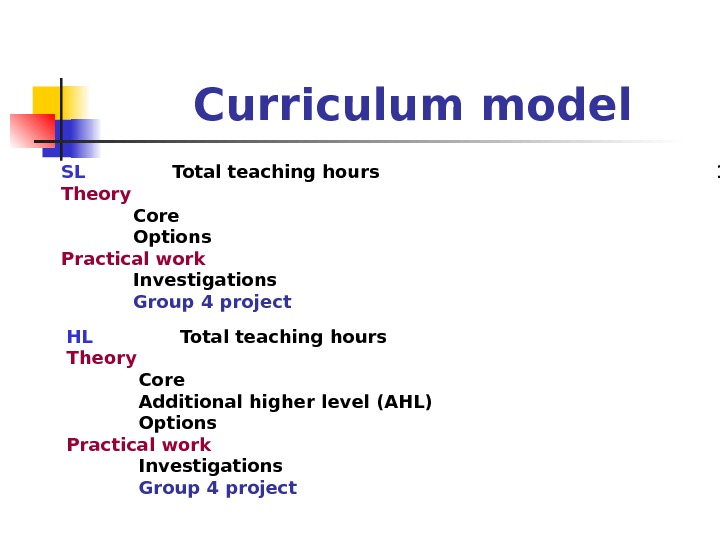

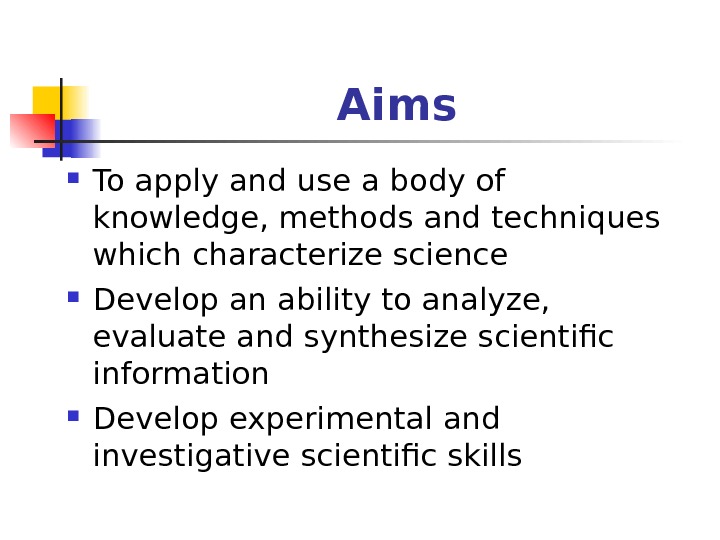



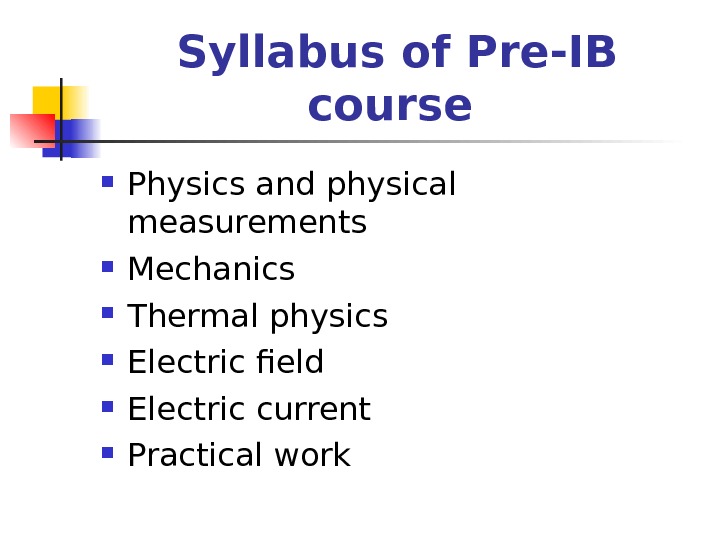

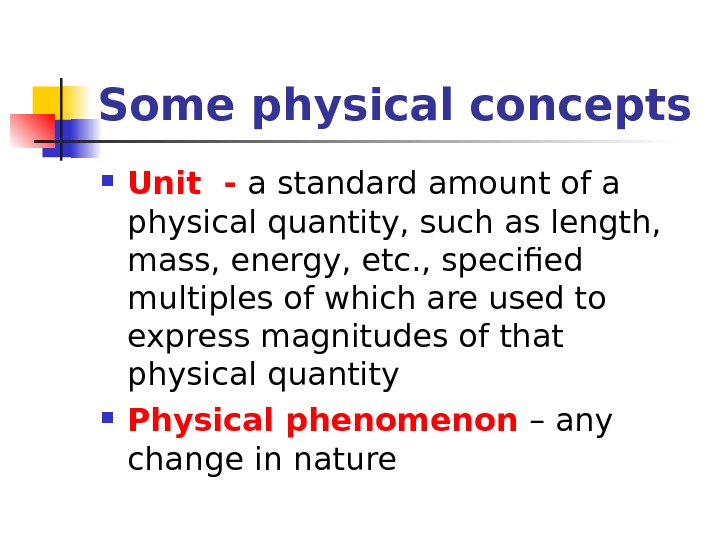
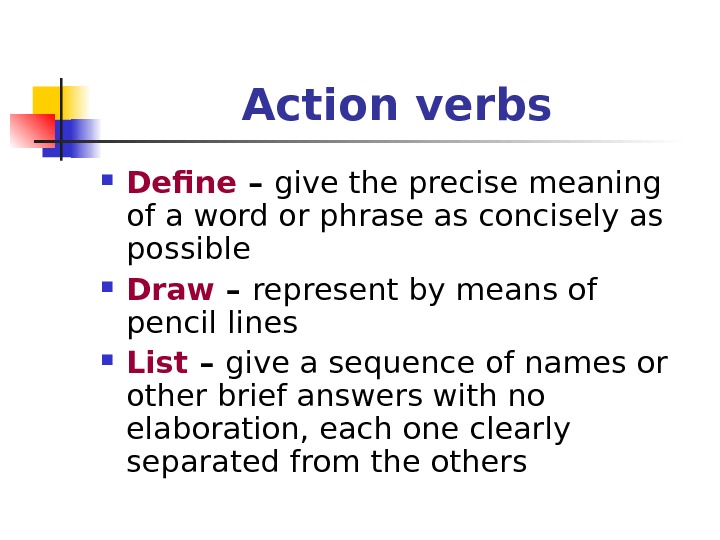
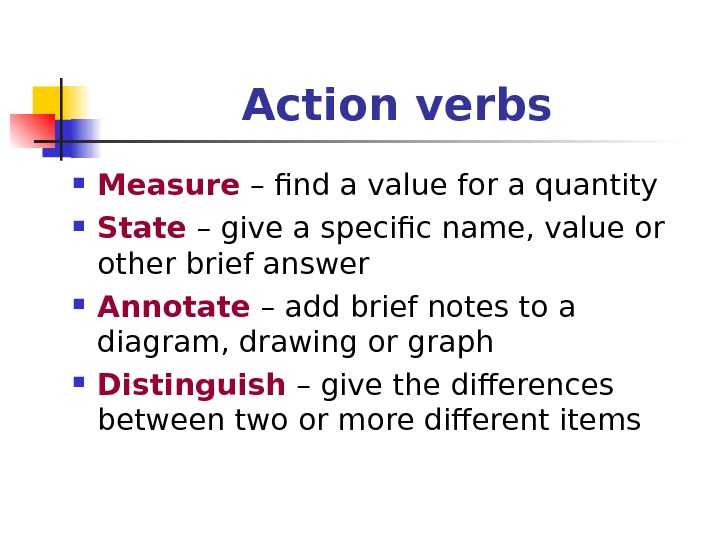
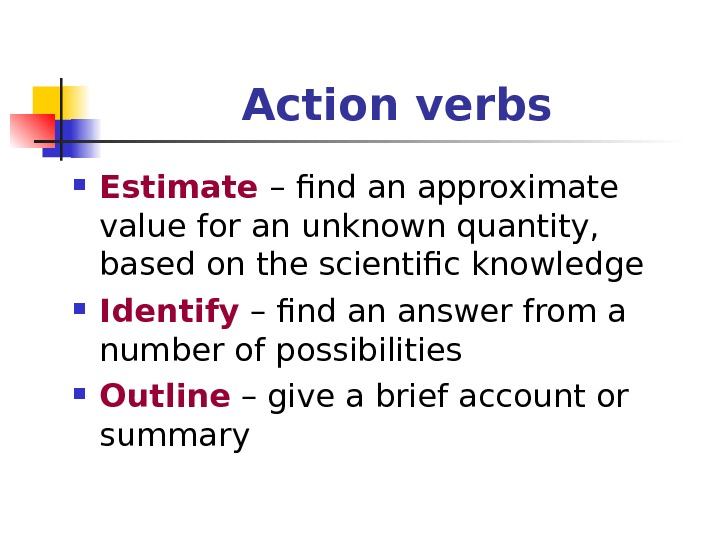
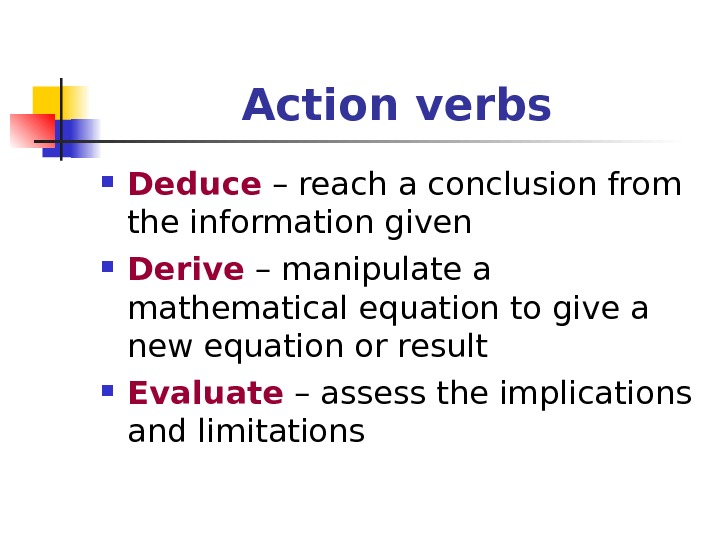
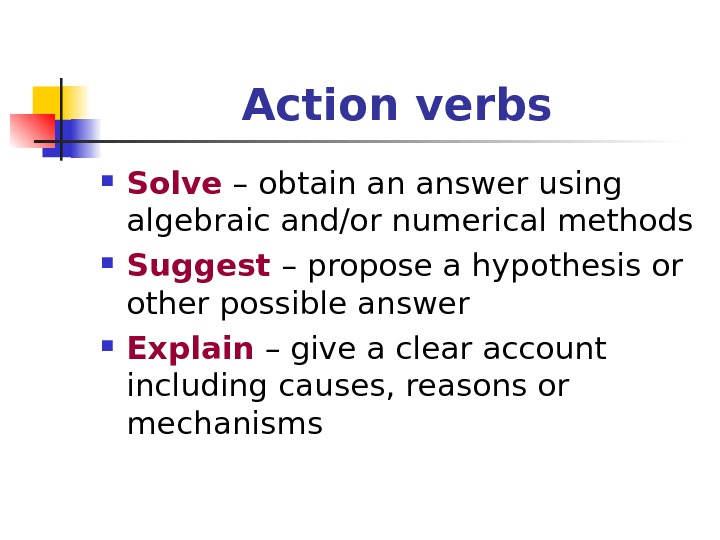



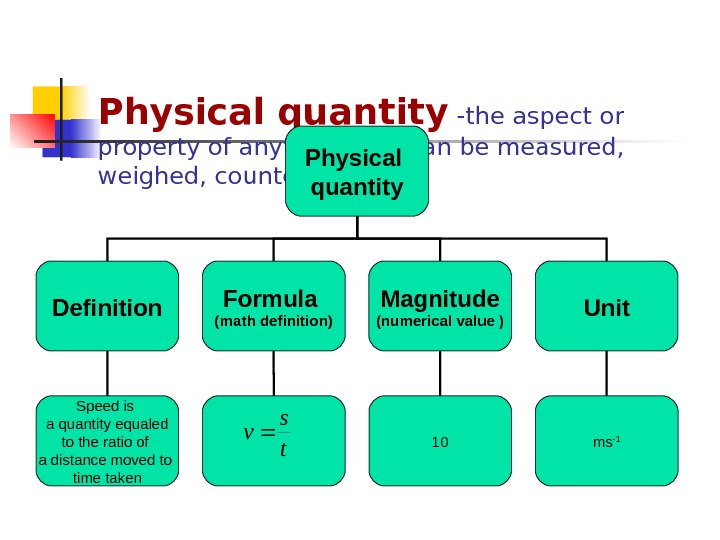
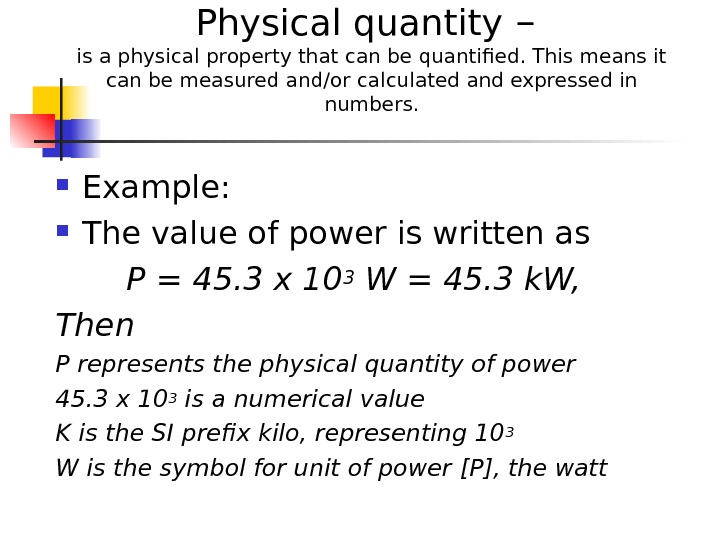
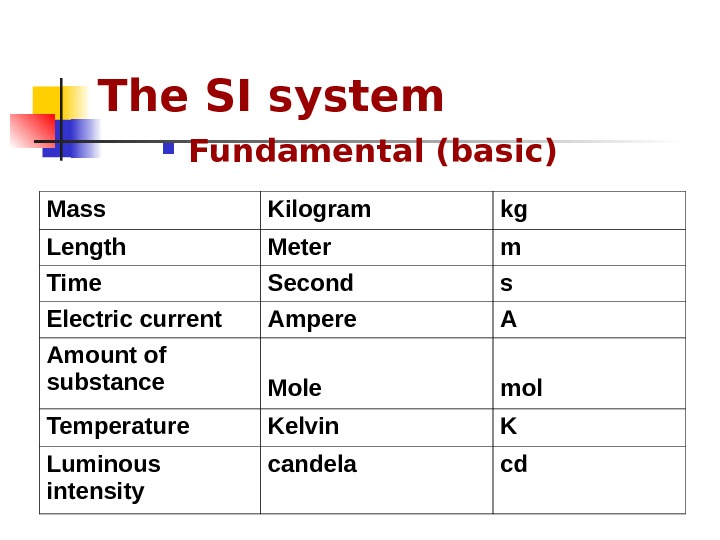
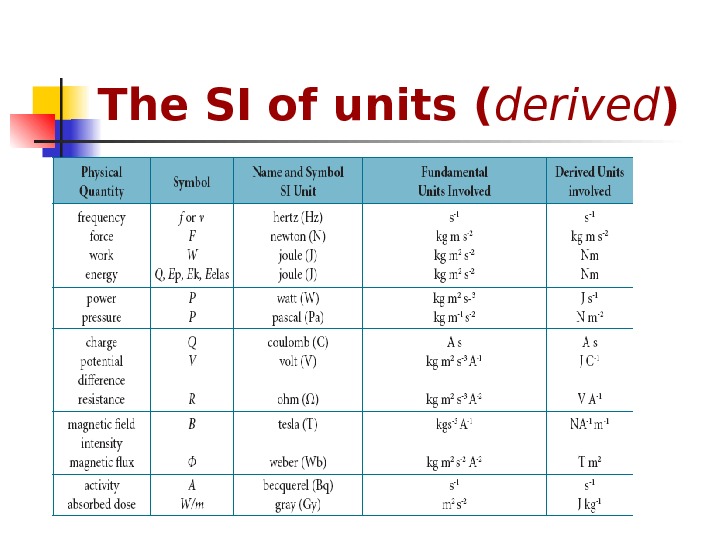
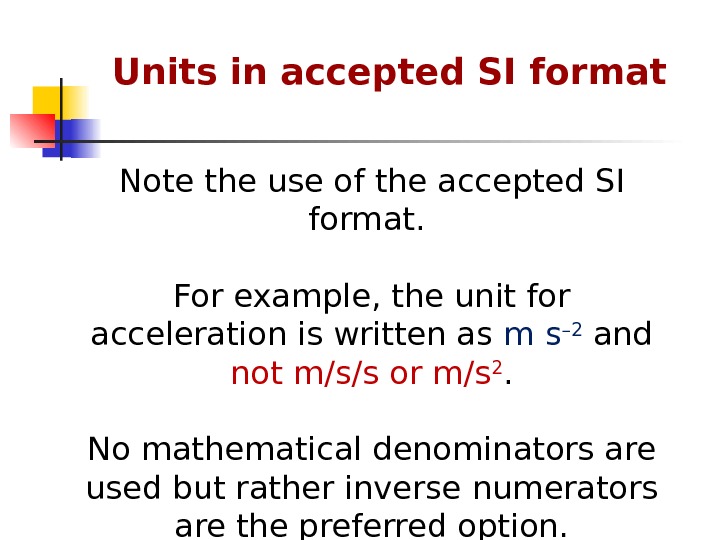
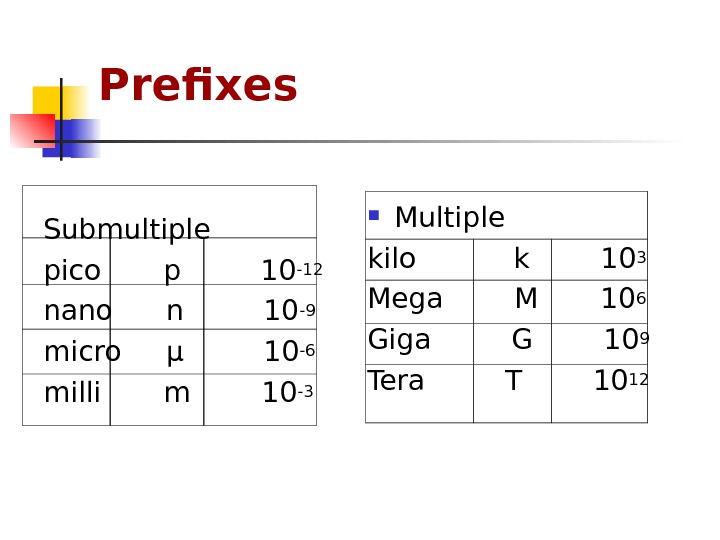

- Размер: 407 Кб
- Количество слайдов: 25
Описание презентации Physics Aims and objectives IB Curriculum model по слайдам
 Physics Aims and objectives I
Physics Aims and objectives I
 Curriculum model SL Total teaching hours 150 Theory 110 Core 80 Options 30 Practical work 40 Investigations 30 Group 4 project 10 HL Total teaching hours 240 Theory 180 Core 80 Additional higher level (AHL) 55 Options 45 Practical work 60 Investigations 50 Group 4 project
Curriculum model SL Total teaching hours 150 Theory 110 Core 80 Options 30 Practical work 40 Investigations 30 Group 4 project 10 HL Total teaching hours 240 Theory 180 Core 80 Additional higher level (AHL) 55 Options 45 Practical work 60 Investigations 50 Group 4 project
 Through studying any of these subjects, you should aware of : • how scientists work and communicate with each other; • The “scientific method” involves the formation, testing and modification of hypotheses through observation and measurement; • What distinguishes the experimental sciences from other disciplines Physics is one of the group 4 subjects.
Through studying any of these subjects, you should aware of : • how scientists work and communicate with each other; • The “scientific method” involves the formation, testing and modification of hypotheses through observation and measurement; • What distinguishes the experimental sciences from other disciplines Physics is one of the group 4 subjects.
 Aims To apply and use a body of knowledge, methods and techniques which characterize science Develop an ability to analyze, evaluate and synthesize scientific information Develop experimental and investigative scientific skills
Aims To apply and use a body of knowledge, methods and techniques which characterize science Develop an ability to analyze, evaluate and synthesize scientific information Develop experimental and investigative scientific skills
 Aims Raise awareness of the moral, ethical, social, economic and environmental implications of using science and technology Develop an appreciation of the possibilities and limitations associated with science and scientists
Aims Raise awareness of the moral, ethical, social, economic and environmental implications of using science and technology Develop an appreciation of the possibilities and limitations associated with science and scientists
 You should achieve: Demonstrate an understanding of : scientific facts and concepts, scientific methods and techniques, scientific terminology; Apply and use: scientific facts and concepts, scientific methods and techniques, scientific terminology;
You should achieve: Demonstrate an understanding of : scientific facts and concepts, scientific methods and techniques, scientific terminology; Apply and use: scientific facts and concepts, scientific methods and techniques, scientific terminology;
 You should achieve: Construct, analyse and evaluate: hypothesis, research questions and predictions, scientific methods and techniques, scientific explanations; Demonstrate the personal skills of cooperation, perseverance and responsibility appropriate for effective scientific investigation and problem solving
You should achieve: Construct, analyse and evaluate: hypothesis, research questions and predictions, scientific methods and techniques, scientific explanations; Demonstrate the personal skills of cooperation, perseverance and responsibility appropriate for effective scientific investigation and problem solving
 Syllabus of Pre-IB course Physics and physical measurements Mechanics Thermal physics Electric field Electric current Practical work
Syllabus of Pre-IB course Physics and physical measurements Mechanics Thermal physics Electric field Electric current Practical work
 Some physical concepts Quantity – 1)the aspect or property of anything that can be measured, weighed, counted, etc; 2) a specified magnitude or amount; Magnitude — a number assigned to a quantity, such as weight, and used as a basis of comparison for the measurement of similar quantities Value — a particular magnitude, number, or amount
Some physical concepts Quantity – 1)the aspect or property of anything that can be measured, weighed, counted, etc; 2) a specified magnitude or amount; Magnitude — a number assigned to a quantity, such as weight, and used as a basis of comparison for the measurement of similar quantities Value — a particular magnitude, number, or amount
 Some physical concepts Unit — a standard amount of a physical quantity, such as length, mass, energy, etc. , specified multiples of which are used to express magnitudes of that physical quantity Physical phenomenon – any change in nature
Some physical concepts Unit — a standard amount of a physical quantity, such as length, mass, energy, etc. , specified multiples of which are used to express magnitudes of that physical quantity Physical phenomenon – any change in nature
 Action verbs Define – give the precise meaning of a word or phrase as concisely as possible Draw – represent by means of pencil lines List – give a sequence of names or other brief answers with no elaboration, each one clearly separated from the others
Action verbs Define – give the precise meaning of a word or phrase as concisely as possible Draw – represent by means of pencil lines List – give a sequence of names or other brief answers with no elaboration, each one clearly separated from the others
 Action verbs Measure – find a value for a quantity State – give a specific name, value or other brief answer Annotate – add brief notes to a diagram, drawing or graph Distinguish – give the differences between two or more different items
Action verbs Measure – find a value for a quantity State – give a specific name, value or other brief answer Annotate – add brief notes to a diagram, drawing or graph Distinguish – give the differences between two or more different items
 Action verbs Estimate – find an approximate value for an unknown quantity, based on the scientific knowledge Identify – find an answer from a number of possibilities Outline – give a brief account or summary
Action verbs Estimate – find an approximate value for an unknown quantity, based on the scientific knowledge Identify – find an answer from a number of possibilities Outline – give a brief account or summary
 Action verbs Deduce – reach a conclusion from the information given Derive – manipulate a mathematical equation to give a new equation or result Evaluate – assess the implications and limitations
Action verbs Deduce – reach a conclusion from the information given Derive – manipulate a mathematical equation to give a new equation or result Evaluate – assess the implications and limitations
 Action verbs Solve – obtain an answer using algebraic and/or numerical methods Suggest – propose a hypothesis or other possible answer Explain – give a clear account including causes, reasons or mechanisms
Action verbs Solve – obtain an answer using algebraic and/or numerical methods Suggest – propose a hypothesis or other possible answer Explain – give a clear account including causes, reasons or mechanisms
 What is Physics? — The fish is an animal (biology) — The stone consists of granite (geology) — The battery is a source of electric voltage (engineering )Universal: Some sciences study specific objects or phenomena, for example Physics studies properties which These have in common (universal phenomena) — The stone/ fish/battery weighs 50 g (physics) — The stone/ fish/battery falls down because of gravity (physics) — The stone/ fish/battery consists of atoms (physics)
What is Physics? — The fish is an animal (biology) — The stone consists of granite (geology) — The battery is a source of electric voltage (engineering )Universal: Some sciences study specific objects or phenomena, for example Physics studies properties which These have in common (universal phenomena) — The stone/ fish/battery weighs 50 g (physics) — The stone/ fish/battery falls down because of gravity (physics) — The stone/ fish/battery consists of atoms (physics)
 What is Physics? Experimental: This means that what is ultimately true is decided by experimental tests. Mathematical: Both experiments and theories in physics often involve mathematical descriptions and analyses.
What is Physics? Experimental: This means that what is ultimately true is decided by experimental tests. Mathematical: Both experiments and theories in physics often involve mathematical descriptions and analyses.
 The realm of Physics Diameter of solar system – 10 13 m Diameter of Universe – 10 26 m
The realm of Physics Diameter of solar system – 10 13 m Diameter of Universe – 10 26 m
 Physical quantity -the aspect or property of anything that can be measured, weighed, counted, etc Physical quantity Definition Formula (math definition) Magnitude (numerical value ) Unit Speed is a quantity equaled to the ratio of a distance moved to time taken 10 ms -1 ts v
Physical quantity -the aspect or property of anything that can be measured, weighed, counted, etc Physical quantity Definition Formula (math definition) Magnitude (numerical value ) Unit Speed is a quantity equaled to the ratio of a distance moved to time taken 10 ms -1 ts v
 Physical quantity – is a physical property that can be quantified. This means it can be measured and/or calculated and expressed in numbers. Example: The value of power is written as P = 45. 3 x 10 3 W = 45. 3 k. W, Then P represents the physical quantity of power 45. 3 x 10 3 is a numerical value K is the SI prefix kilo, representing 10 3 W is the symbol for unit of power [P], the watt
Physical quantity – is a physical property that can be quantified. This means it can be measured and/or calculated and expressed in numbers. Example: The value of power is written as P = 45. 3 x 10 3 W = 45. 3 k. W, Then P represents the physical quantity of power 45. 3 x 10 3 is a numerical value K is the SI prefix kilo, representing 10 3 W is the symbol for unit of power [P], the watt
 The SI system Fundamental (basic) Mass Kilogram kg Length Meter m Time Second s Electric current Ampere A Amount of substance Mole mol Temperature Kelvin K Luminous intensity candela cd
The SI system Fundamental (basic) Mass Kilogram kg Length Meter m Time Second s Electric current Ampere A Amount of substance Mole mol Temperature Kelvin K Luminous intensity candela cd
 The SI of units ( derived )
The SI of units ( derived )
 Note the use of the accepted SI format. For example, the unit for acceleration is written as m s – 2 and not m/s/s or m/s 2. No mathematical denominators are used but rather inverse numerators are the preferred option. U nits in acce p ted SI f o rmat
Note the use of the accepted SI format. For example, the unit for acceleration is written as m s – 2 and not m/s/s or m/s 2. No mathematical denominators are used but rather inverse numerators are the preferred option. U nits in acce p ted SI f o rmat
 Prefixes Submultiple pico p 10 -12 nano n 10 -9 micro μ 10 -6 milli m 10 -3 Multiple kilo k 10 3 Mega M 10 6 Giga G 10 9 Tera T
Prefixes Submultiple pico p 10 -12 nano n 10 -9 micro μ 10 -6 milli m 10 -3 Multiple kilo k 10 3 Mega M 10 6 Giga G 10 9 Tera T
 Scientists tend to use scientific notation when stating a measurement rather than writing lots of figures. 1. 2 * 10 6 is easier to write and has more significance than 1 200 000. In order to minimise confusion and ambiguity, all quantities are best written as a value between one and ten multiplied by a power of ten. For example, we have that, 0. 06 kg = 6 * 10 -2 kg
Scientists tend to use scientific notation when stating a measurement rather than writing lots of figures. 1. 2 * 10 6 is easier to write and has more significance than 1 200 000. In order to minimise confusion and ambiguity, all quantities are best written as a value between one and ten multiplied by a power of ten. For example, we have that, 0. 06 kg = 6 * 10 -2 kg

